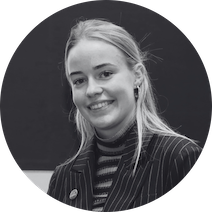Adaptation in Water Systems: Youth Leadership and Nature-Based Innovation from Fryslân to the World
F
or centuries, the Netherlands has lived with water. We’ve dammed rivers, drained lakes, and walled off seas. In Fryslân, we quite literally built our lives on terpen, artificial mounds that held villages above the tides. We’ve raised dikes, invented polders, and pumped dry what nature insisted should stay wet to farm and to live, and we still do this up to this day. The Dutch story is one of engineering brilliance, but also of a deeper truth: when you live in a country that’s mostly below sea level, water is not an enemy to defeat. It is a force to understand, a partner in survival, and increasingly, a collaborator in designing a climate-resilient future.
That lesson is becoming more urgent today. Climate change isn’t just about distant glaciers or abstract degrees of warming; it’s about what happens when there’s too much water, not enough water, or the wrong kind of water at the wrong time. And it’s the next generation, in Fryslân and beyond, that is beginning to shape a new relationship with water: not one of resistance, but of resilience. Even the Global Center on Adaptation is embodying that shift, quite literally. In the port of Rotterdam, its headquarters now float. Designed to rise and fall with the tides, the building doesn’t try to hold the water back; it adapts. When your office itself is built to move with the climate, the message is clear: the tide has already turned. Even in the Netherlands, a country long known for holding back the sea, we’re learning a deeper truth. We can’t keep fighting the water forever. Sooner or later, we have to learn to live with it.
Ground-Level Innovation in Fryslân
Adaptation in Fryslân isn’t just theory. It’s being built, tested, and refined every day by a unique network of students, researchers, professors, companies, and policymakers working side by side. Nowhere is this collaboration more visible than at the WaterCampus in Leeuwarden, where institutions like Wetsus and the Water Alliance create a space where science meets society, and where climate solutions are not only developed but also implemented in the region itself.
At Wetsus, I’ve seen this cooperation firsthand. For an internship, I’m part of a research group exploring how we can create bio-based membranes using polyhydroxyalkanoates (PHAs), biopolymers recovered from wastewater streams. Instead of relying on fossil-based plastics, we’re developing materials that are both sustainable and locally sourced from waste. This kind of research isn’t done in isolation. It’s made possible by a direct connection between academic institutions, businesses that want to improve their sustainability, and public actors like Wetterskip Fryslân, who support the transition from research to implementation.
Even the toilets at Wetsus challenge us to think differently. Instead of flushing away valuable nutrients, researchers are exploring how to recover phosphorus and nitrogen from human waste to fertilize soils or create biogas. It’s not just about closing loops, it’s about rethinking what waste means in a circular water system.
What makes Fryslân unique isn’t just its ideas, it’s the way they’re developed. The intimate cooperation between companies, students, professors, public bodies, and water authorities allows research to respond to real-world challenges immediately. A company can walk in with a sustainability issue, and a multidisciplinary team is formed to study, test, and co-create a solution that can be implemented both regionally and beyond.
This model of embedded innovation, where science and practice grow together, means that adaptation doesn’t get stuck in reports or pilot projects. It becomes real, usable, and scalable. It also sets an example of how climate adaptation can flourish when knowledge, governance, and community are deeply connected.
Nature as an Ally
Historically, Dutch water management relied on separation. Build the dike, pump the polder, keep land and water separate. But in the face of climate uncertainty, that approach is shifting. In Fryslân, the new model is integration. Wetlands are no longer seen as wasted space but as natural infrastructure. Willows and reed beds help filter greywater. Farmers experiment with saline-tolerant crops as sea levels push salt into the soil. Wastewater is reused to irrigate urban green spaces, closing loops that once wasted water and nutrients.
At the heart of this transition is a change in mindset. The future lies not in ever more control, but in learning to live within ecological boundaries. True innovation doesn’t come from building higher walls. It comes from designing smarter systems that fit the natural world, rather than forcing it to fit us.
Water as the Pulse of Resilience
Water is more than a sector. It’s the bloodstream of every climate solution. Without water, we can’t grow food, maintain health, or preserve ecosystems. And without adaptive water systems, we won’t be ready for what the climate future brings.
In the Netherlands, water adaptation is no longer a future ambition, it’s a present-day reality. From the rain gardens of Leeuwarden to the floating offices of Rotterdam, from the peatlands of Aldeboarn to the water labs of Wetsus, the groundwork for resilience is already being laid.
These are not side stories. They are the blueprint. Let’s make sure they inform national plans, inspire global action, and most importantly, empower those who will inherit the waters we leave behind.
The ideas presented in this article aim to inspire adaptation action – they are the views of the author and do not necessarily reflect those of the Global Center on Adaptation.

Marij Tolsma is a Youth Advisory Panel Member 2025, and a BSc student in Global Responsibility and Leadership at the University of Groningen, Campus Fryslân